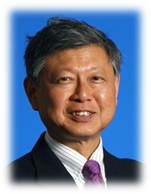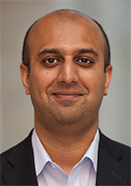Keynote Speakers

Microsoft/Univ. of Tokyo
Beyond the Current Application Horizon of 3D Models
Abstract:
3D models have been mainly used to visualize CG and VR display systems. However, beyond these
visualization applications, 3D models can be used in much larger areas. This talk will introduce new
frontiers in 3D model applications such as archaeology and human-robot interaction. The first half of the
talk covers the archaeological application of the 3D models of Kyushu decorative tumuli 3D, originally
obtained for the VR display system of the Kyushu National Museum. The data analysis of Otsuka
tumulus provides new insights into how to construct the tumulus. Another analysis of the 3D model of
the Sekizin-San Tumulus provides new knowledge about the relationship between surrounding
vegetation and microbial colony development. The second part describes an example that can estimate
human intentions from the analysis of 3D models in robot education. Through these examples, I would
like to promote 3D models for use in the new frontiers.

Czech Technical Univ. in Prague
Recent Progress in Solving Minimal Problems in 3D Reconstruction
Abstract:
We will review the recent progress in solving minimal problems in computer vision. Minimal
problems are key blocks in 3D reconstruction from images that are used to compute small
arrangements of points and cameras in RANSAC. First, we show a characterization the class
of minimal problems for the complete visibility of features in calibrated images. Then, we will
extend it to partial visibility covering many situations with occlusions for three calibrated
cameras. We will see that there is an infinite number of minimal problems that can be grouped
into 74575 camera-minimal problem equivalence classes, which are practical for designing
minimal solvers, and we will show how to pick the simplest camera-minimal problem for each
minimal problem. The underlying technique for computing the number of solutions for each
minimal problem is Homotopy Continuation. We will review the technique and will suggest
how it can be used to efficiently compute problems that are too hard for current symbolic-
numeric solving technology.

CMU/Facebook Reality Lab.
Photorealistic Telepresence
Abstract:
Telepresence has the potential to bring billions of people into artificial reality
(AR/MR/VR). It is the next step in the evolution of telecommunication, from telegraphy to
telephony to videoconferencing. In this talk, I will describe early steps taken at FRL Pittsburgh
towards achieving photorealistic telepresence: realtime social interactions in AR/VR with
avatars that look like you, move like you, and sound like you. If successful, photorealistic
telepresence will introduce pressure for the concurrent development of the next generation of
algorithms and computing platforms for computer vision and computer graphics. In particular, I
will introduce codec avatars : the use of neural networks to unify the computer vision
(inference) and computer graphics (rendering) problems in signal transmission and reception.
The creation of codec avatars require capture systems of unprecedented 3D sensing resolution,
which I will also describe.